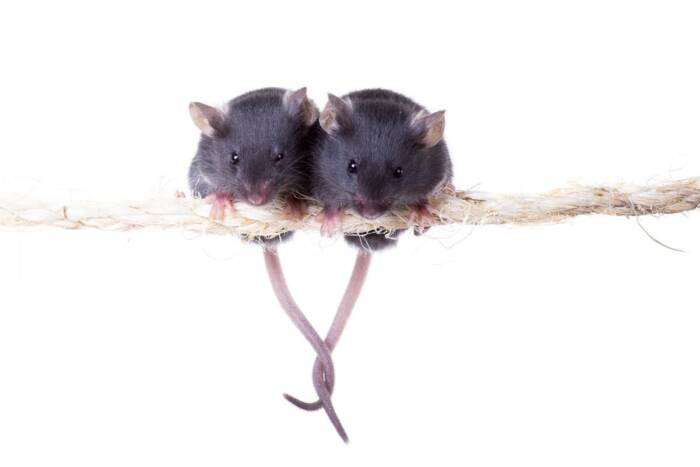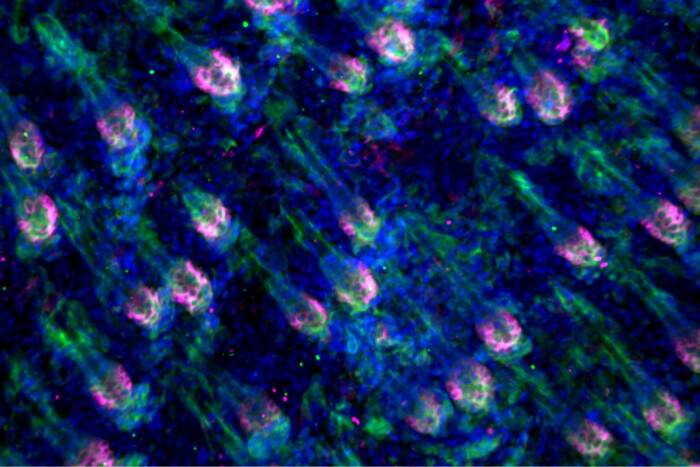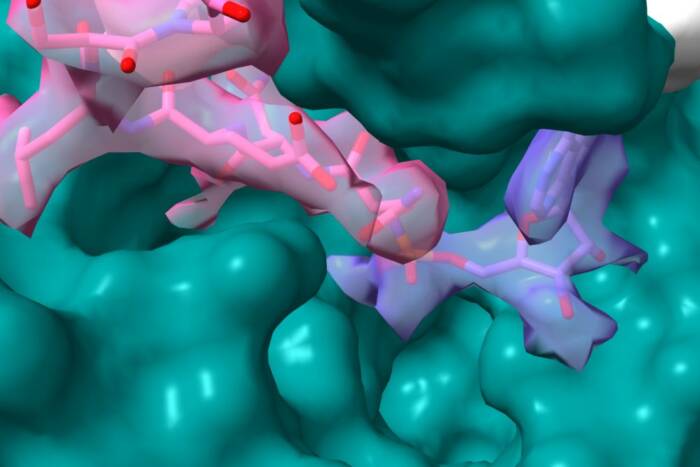Viral gene hijacks small RNA pathway as a counter-attack strategy
Every day plants are battling for survival against tiny viruses invading their cells. Small RNAs are a major part of the plant’s immune system, but viruses have devised counter-attack molecules that disable this line of defense. Research from Nam-Hai Chua’s laboratory has found a new mechanism for how a viral molecule causes the breakdown of the plant’s defense system.
 (opens in new window)
(opens in new window)
Growth stunt. When scientists engineered the mustard plant Arabadopsis to express a cucumber mosaic virus, they observed defects in its development such as curled or upside-down leaves. The observation tipped them off to interference in the plant's miRNA pathway
“There is a molecular arms race going on between plant antiviral RNA and viral counter-defense mechanisms,” says Chua, Rockefeller University’s head of the Laboratory of Plant Molecular Biology. Plants use small RNAs, called siRNAs, to find viral genes and silence them in a process called post-translational gene silencing (PTGS). Using another type of small RNA, called miRNAs, plants use the same method to regulate expression of their own genes. One of the first identified suppressors of the PTGS pathway was the 2b protein from the cucumber mosaic virus (CMV), a pathogen that can infect over 800 species of plants and causes massive crop and economic losses every year. While previous research suggested that the CMV2b protein only suppressed siRNA, and not miRNA, pathways, Chua’s lab found different results, and solved how CMV2b executes its attack.
“We wanted to know if CMV2b was interfering in the miRNA pathway or not,” says Xiuren Zhang, a postdoc in Chua’s laboratory and first author of the paper. “After infecting our plants with a very severe CMV strain, we immediately saw a dramatic change in their development. Their leaves curled upward, they had serrated edges, some leaves were turned upside-down, and there were problems in flower development. This told us that CMV2b was definitely interfering in the miRNA pathway.”
Other viral suppressors that obstruct the miRNA pathway do so by binding to the small RNAs and sequestering them away. But the developmental defects the researchers saw reminded them of plants with a mutation in the Argonaute1gene, which is involved in both the siRNA and miRNA pathways. They found that instead of binding to the miRNAs, CMV2b bound directly to the Argonaute1 protein and prevented it from functioning.
“Because of the shared components of the siRNA and miRNA pathways, interfering with the miRNA pathway may only be a consequence of the viral counter-attack on the siRNA system,” says Chua, the Andrew W. Mellon Professor. “But it could also be a direct strategy for the virus to redirect the host plant’s gene expression in its favor. Our finding that CMV2b uses a unique mechanism to disable host defense, which may be used by other viruses as well, enhances our understanding of how versatile viral suppressors are in their counter-attack.”
Genes & Development 20(23): 3255-3268 (December 1, 2006)(opens in new window)


